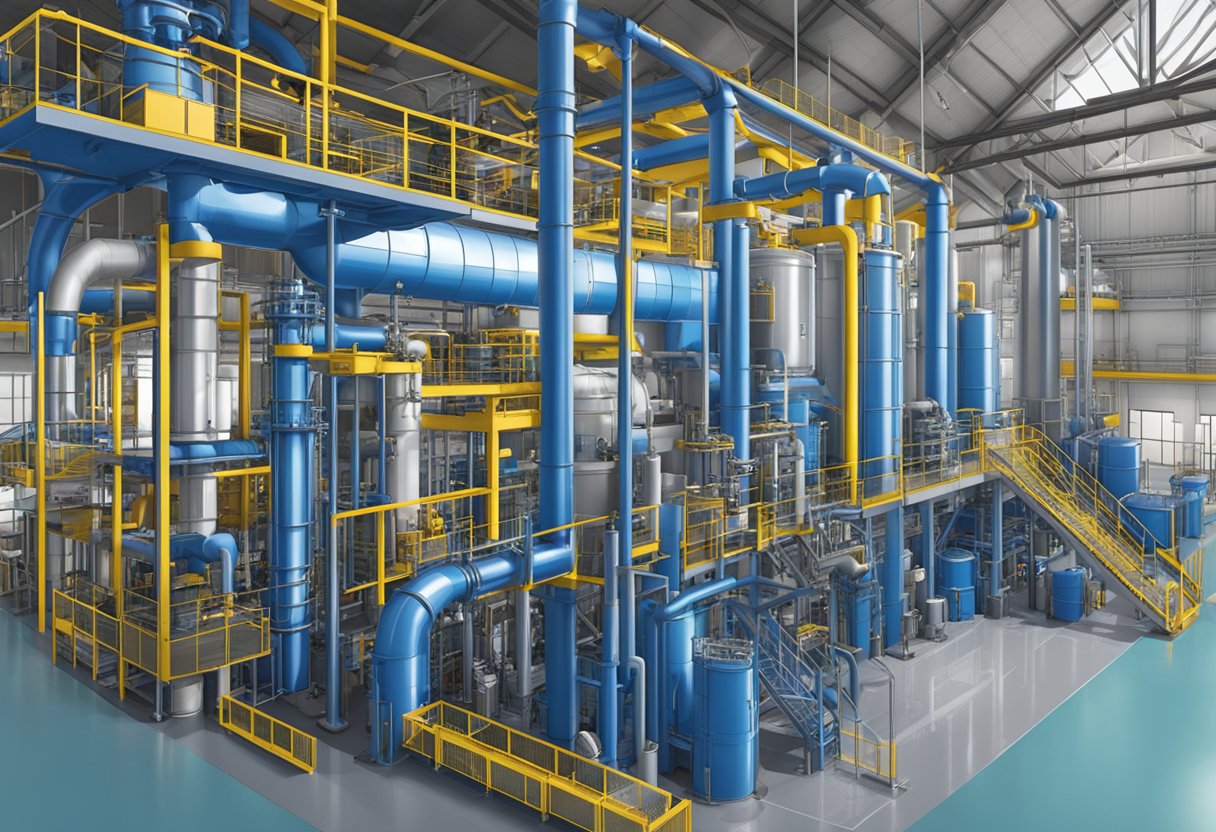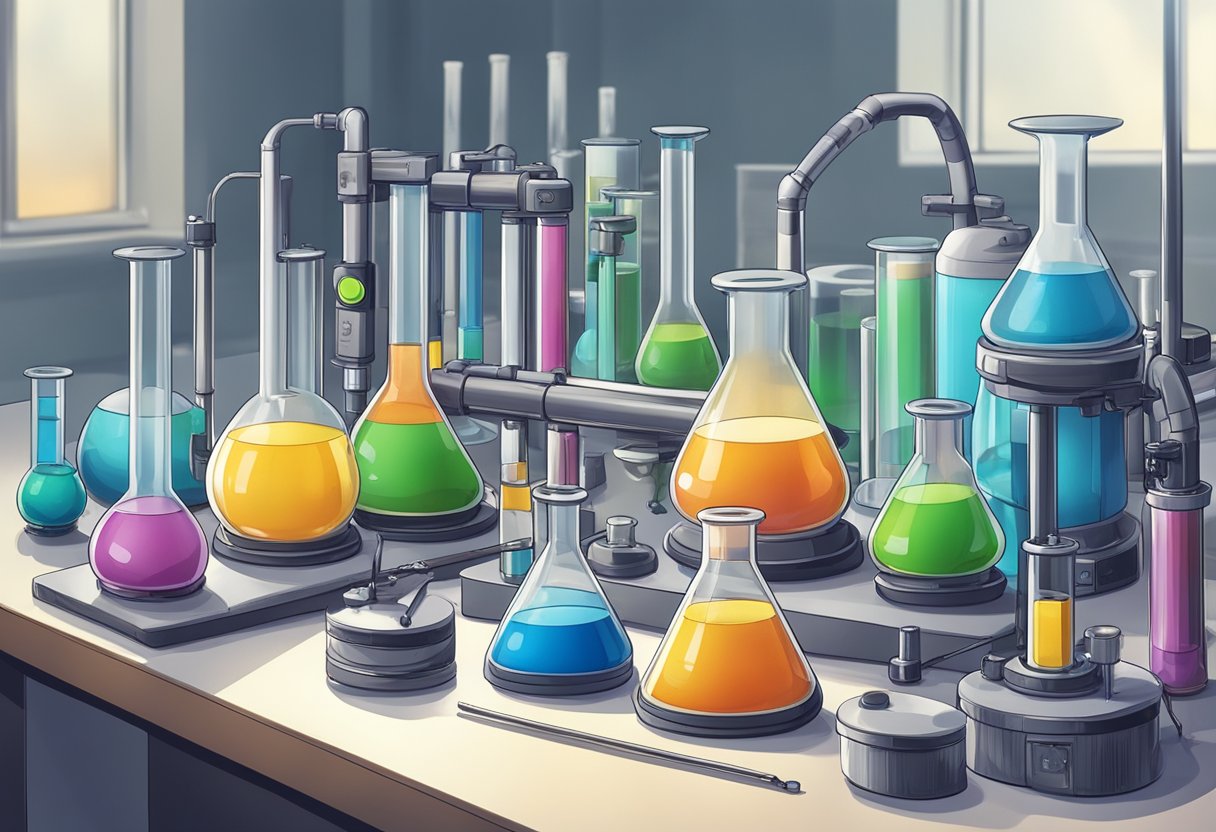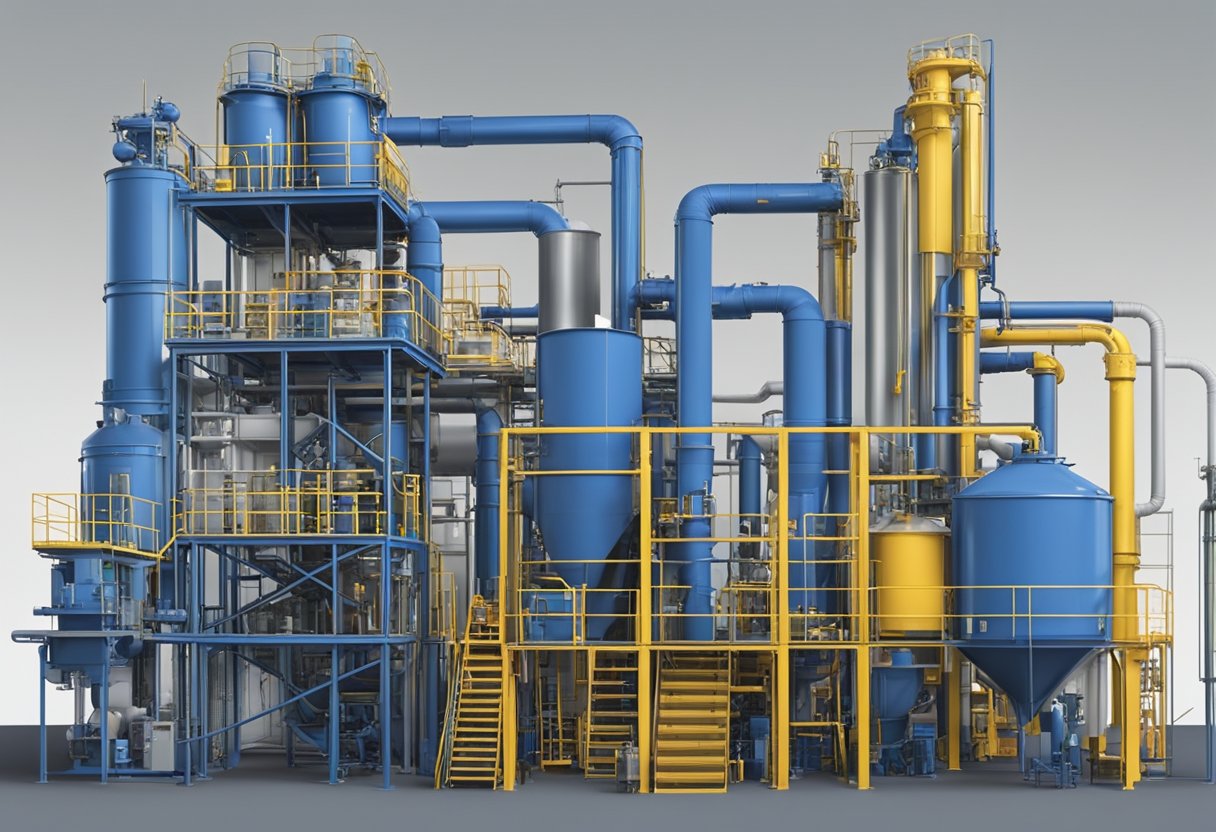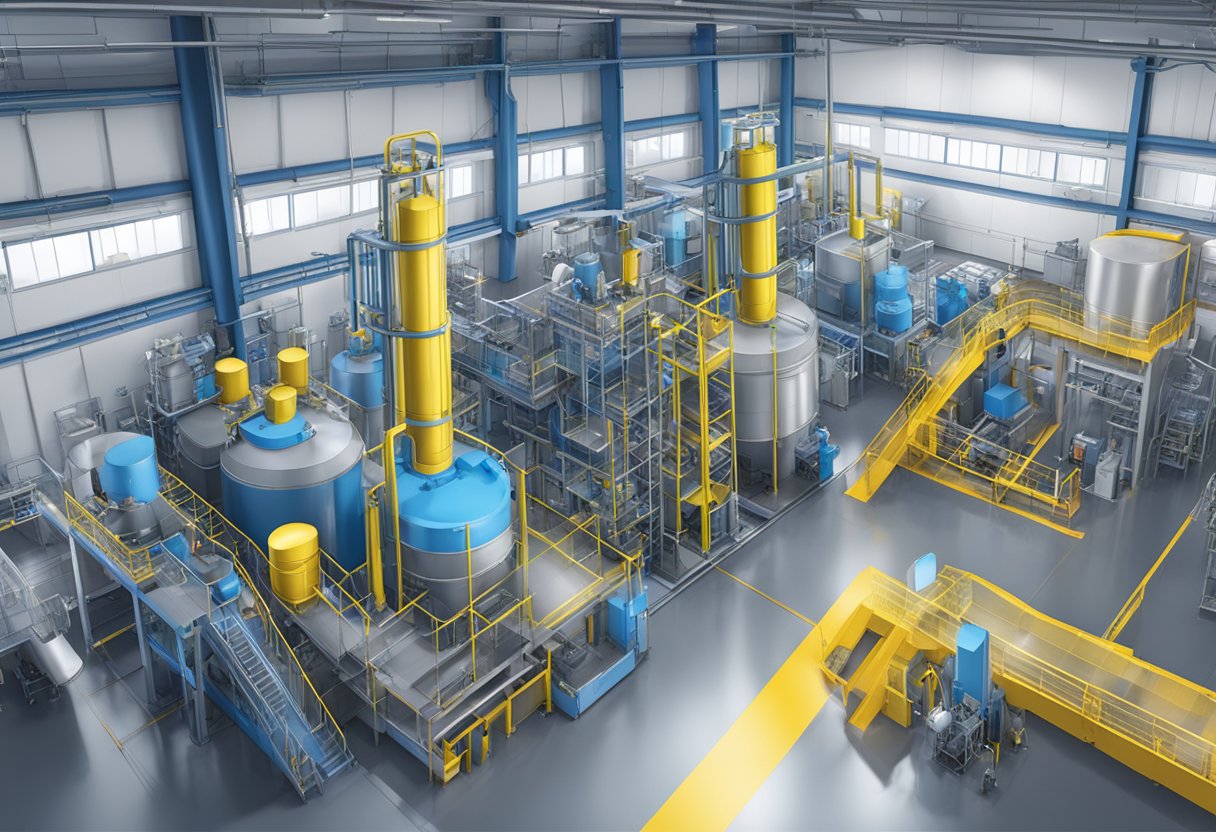BR 9000 Butadiene Rubber: Properties, Applications, and Suppliers
19/01/2024
BR 9000 Butadiene Rubber: A Comprehensive Overview

BR 9000 butadiene rubber is a synthetic elastomer that has gained significant popularity in recent years due to its exceptional strength, durability, and versatility. This type of rubber is produced by polymerizing butadiene, a colorless gas, in the presence of a catalyst. The resulting product is a high-purity rubber that can be used in a wide range of applications, from tire manufacturing to industrial and consumer goods.
One of the key advantages of BR 9000 butadiene rubber is its exceptional resistance to abrasion, tearing, and punctures. This makes it ideal for use in high-stress applications where other materials might fail, such as in heavy-duty tires or conveyor belts. Additionally, BR 9000 rubber has excellent elasticity and resilience, allowing it to withstand repeated stretching and compression without losing its shape or structural integrity. These properties make it an ideal material for use in a variety of industrial and consumer products, including automotive parts, footwear, and sporting goods.
Chemical Properties of BR 9000

Molecular Structure
BR 9000 is a synthetic rubber that belongs to the family of butadiene rubbers. Its molecular formula is C4H6, and it has a repeating unit of butadiene. The polymer is formed by the polymerization of butadiene molecules, which results in a linear chain structure. The polymer chain consists of alternating double and single bonds, which give it a high degree of flexibility and elasticity.
Physical Characteristics
BR 9000 has several physical properties that make it a popular choice in the rubber industry. It has a low glass transition temperature, which means it remains flexible at low temperatures. Additionally, it has a high resistance to abrasion, tear, and wear, making it ideal for use in tire treads and other heavy-duty applications.
The chemical properties of BR pbt resin 9000 are also noteworthy. It is resistant to many chemicals, including acids, bases, and alcohols. It is also highly resistant to ozone and UV radiation, which makes it an excellent choice for outdoor applications.
In summary, BR 9000 is a synthetic rubber with a unique molecular structure that gives it excellent flexibility and elasticity. Its physical and chemical properties make it a popular choice for a wide range of applications in the rubber industry.
Production Process

Raw Material Sourcing
The production of BR 9000 butadiene rubber requires high-quality raw materials. The primary raw material for BR 9000 is butadiene, which is sourced from petrochemical companies. The purity and quality of butadiene are crucial to the final product’s properties. Other raw materials required for the production process include initiators, solvents, and stabilizers, which are sourced from reliable suppliers.
Polymerization Techniques
The polymerization process is the heart of BR 9000 production. The butadiene monomers are polymerized using anionic polymerization techniques. The process involves the use of initiators and solvents to control the reaction. The reaction is carried out at low temperatures and under controlled conditions to ensure the desired molecular weight distribution, which is critical to the final product’s properties. The polymerization process is closely monitored to ensure consistent product quality.
Post-Production Treatments
After the polymerization process, the BR 9000 butadiene rubber is subjected to post-production treatments to improve its properties. The treatments include stripping, washing, and drying to remove any impurities and residual solvents. The rubber is then compounded with additives to improve its processing and performance properties. The compounding process involves the use of fillers, plasticizers, and stabilizers, among others. The final product is then packaged and shipped to customers.
In summary, the production process of BR 9000 butadiene rubber involves sourcing high-quality raw materials, anionic polymerization techniques under controlled conditions, and post-production treatments to improve the product’s properties. The process is closely monitored to ensure consistent product quality.
Applications

Automotive Industry
BR 9000 butadiene rubber is widely used in the automotive industry due to its excellent resistance to abrasion, tear, and heat. It is commonly used in the production of tires, belts, hoses, and other automotive parts. The high elasticity and flexibility of this rubber make it ideal for use in applications where durability and reliability are crucial.
In addition, BR 9000 butadiene rubber is highly resistant to oil and chemicals, making it an excellent choice for automotive parts that come into contact with these substances. Its ability to withstand extreme temperatures also makes it suitable for use in engine components and other high-temperature applications.
Consumer Goods
BR 9000 butadiene rubber is also used in the production of various consumer goods, including footwear, sports equipment, and toys. The high durability and flexibility of this rubber make it an ideal material for these applications.
In footwear, for example, BR 9000 butadiene rubber is commonly used to make the soles of shoes, providing excellent grip and traction. In sports equipment, this rubber is used to make balls, providing excellent bounce and durability. In toys, it is used to make various components, providing excellent resistance to wear and tear.
Industrial Uses
BR 9000 butadiene rubber is widely used in various industrial applications, including construction, mining, and oil and gas. Its excellent resistance to abrasion, tear, and heat make it ideal for use in these harsh environments.
In construction, for example, BR 9000 butadiene rubber is used to make various components, including seals and gaskets, providing excellent resistance to weathering and UV radiation. In mining, it is used to make conveyor belts, providing excellent resistance to abrasion and impact. In oil and gas, it is used to make various components, including hoses and seals, providing excellent resistance to oil and chemicals.
Market Analysis
Demand Trends
BR 9000 Butadiene Rubber is a synthetic rubber used in various industries such as automotive, construction, and consumer goods. The demand for BR 9000 Butadiene Rubber is expected to increase in the coming years due to the growing demand for tires, which accounts for a significant share of the overall demand for butadiene rubber. The increasing demand for fuel-efficient and eco-friendly tires is expected to boost the demand for BR 9000 Butadiene Rubber in the automotive industry.
Supply Chain Dynamics
The supply chain for BR 9000 Butadiene Rubber is complex, with several players involved in the production and distribution of the rubber. The major players in the market include Dow Chemicals, Lanxess AG, and Sinopec. The production of BR 9000 Butadiene Rubber involves the use of butadiene, which is derived from crude oil. Any fluctuations in crude oil prices can have a significant impact on the production and pricing of BR 9000 Butadiene Rubber.
Price Fluctuations
The price of BR 9000 Butadiene Rubber is influenced by several factors such as crude oil prices, demand and supply dynamics, and production costs. The prices of BR 9000 Butadiene Rubber have been volatile in recent years due to the fluctuations in crude oil prices. The increasing demand for butadiene rubber in the tire industry has also put pressure on the prices of BR 9000 Butadiene Rubber. However, the development of new production technologies and the entry of new players in the market are expected to increase the competition and reduce the prices of BR 9000 Butadiene Rubber in the future.
Quality and Standards
Certification Requirements
BR 9000 Butadiene Rubber is produced in accordance with various international standards, including ISO 9001:2015, ISO/TS 16949:2009, and ISO 14001:2015. These certifications ensure that the manufacturing process adheres to strict quality control measures and environmental standards.
In addition, the rubber is certified by regulatory bodies such as the United States Food and Drug Administration (FDA) and the European Union’s Registration, Evaluation, Authorization, and Restriction of Chemicals (REACH) program. These certifications ensure that the rubber is safe for use in various applications and meets all relevant regulatory requirements.
Testing Methods
To ensure the quality of BR 9000 Butadiene Rubber, it undergoes rigorous testing using various methods. These tests include:
- Tensile strength testing to measure the rubber’s ability to withstand stretching and pulling forces.
- Hardness testing to measure the rubber’s resistance to indentation or penetration.
- Compression set testing to measure the rubber’s ability to recover after being compressed.
- Aging testing to simulate the effects of long-term exposure to heat and other environmental factors.
- Chemical resistance testing to measure the rubber’s ability to withstand exposure to various chemicals.
All of these tests are conducted in accordance with international standards such as ASTM and ISO, and the results are carefully analyzed to ensure that the rubber meets the required specifications.
Overall, the high quality and strict adherence to standards make BR 9000 Butadiene Rubber a reliable and safe choice for a wide range of applications.
Environmental Impact
Emissions and Byproducts
BR 9000 butadiene rubber is a synthetic rubber that is produced through a process of polymerization. This process involves the use of various chemicals and solvents, which can result in the emission of harmful pollutants into the environment. The emissions from the production of BR 9000 include nitrogen oxides, sulfur oxides, and volatile organic compounds (VOCs). These pollutants can contribute to the formation of smog, acid rain, and other environmental problems.
In addition to emissions, the production of BR 9000 also generates various byproducts. These include waste solvents, sludge, and other materials that can be harmful to the environment if not properly disposed of. To minimize the environmental impact of these byproducts, many manufacturers of BR 9000 have implemented recycling and waste reduction programs.
Recycling and Disposal
BR 9000 butadiene rubber is a durable material that has a long lifespan. However, when it reaches the end of its useful life, it must be disposed of properly to minimize its impact on the environment. One option for disposal is recycling. BR 9000 can be recycled and used to produce new rubber products, reducing the need for virgin materials and minimizing waste.
Another option for disposal is incineration. When BR 9000 is incinerated, it can generate energy that can be used to power industrial processes. However, incineration can also result in the emission of harmful pollutants into the environment.
Overall, the environmental impact of BR 9000 butadiene rubber depends on how it is produced, used, and disposed of. By implementing sustainable practices such as waste reduction and recycling, the impact of BR 9000 on the environment can be minimized.
Health and Safety
Handling Procedures
BR 9000 Butadiene Rubber is a hazardous material that requires proper handling procedures. When handling this material, it is important to wear appropriate personal protective equipment, such as gloves, goggles, and a respirator. Workers should also avoid direct skin contact and inhalation of the material.
During handling, it is important to prevent spills and leaks by using appropriate containers and handling equipment. Any spills or leaks should be cleaned up immediately using appropriate methods and equipment.
Exposure Controls
To prevent exposure to BR 9000 Butadiene Rubber, it is important to implement appropriate exposure controls. This may include using ventilation systems to control airborne concentrations of the material, as well as implementing engineering controls to prevent or minimize exposure.
Workers should also be trained on the proper handling and use of the material, as well as emergency response procedures in case of accidental exposure.
Regular monitoring of the workplace for exposure to BR 9000 Butadiene Rubber should be conducted to ensure that exposure limits are not exceeded. If exposure limits are exceeded, appropriate measures should be taken to reduce exposure levels.
Overall, it is important to follow proper handling procedures and exposure controls when working with BR 9000 Butadiene Rubber to ensure the health and safety of workers.
Technological Advancements
Innovations in Production
BR 9000 butadiene rubber has been produced using different technologies over the years. The traditional emulsion polymerization process was replaced by the solution polymerization process, which offered better control over the molecular weight distribution of the polymer. Recently, more advanced production methods have been developed that offer better efficiency and reduced environmental impact.
One such method is the use of a continuous butadiene rubber production process. This process involves the use of a reactor system that allows for the continuous addition of butadiene and other monomers, as well as the continuous removal of the polymer product. This results in a more consistent product with fewer impurities.
Another innovation in production is the use of computer-controlled systems that allow for precise control over the reaction conditions. This ensures that the polymerization process is carried out under optimal conditions, resulting in a high-quality product with consistent properties.
Material Enhancements
BR 9000 butadiene rubber has undergone several material enhancements over the years. One such enhancement is the use of functionalized polymers. These polymers have been modified to have specific functional groups that allow for better adhesion to other materials, such as metals and plastics. This has led to the development of new applications for butadiene rubber, such as in the automotive industry for the production of tires and other components.
Another material enhancement is the use of nanocomposites. These composites consist of butadiene rubber and nanoparticles, such as carbon black or silica. The addition of these nanoparticles improves the mechanical properties of the rubber, such as its strength and durability. Nanocomposites have also been shown to improve the electrical conductivity of butadiene rubber, making it suitable for use in electronic applications.
In conclusion, technological advancements in the production and material enhancements of BR 9000 butadiene rubber have led to improved efficiency, consistency, and performance. These advancements have opened up new opportunities for the use of butadiene rubber in various industries, making it a versatile and valuable material.
Regulatory Landscape
International Regulations
BR 9000 Butadiene Rubber is subject to a range of international regulations aimed at ensuring the safety of workers and consumers. The European Union’s REACH (Registration, Evaluation, Authorization, and Restriction of Chemicals) regulation requires manufacturers to register their chemicals and provide information on their properties, uses, and risks. BR 9000 is also subject to the United Nations’ Globally Harmonized System of Classification and Labelling of Chemicals (GHS), which provides a standardized system for communicating information about the hazards of chemicals.
In addition to these regulations, BR 9000 must comply with the regulations of the countries where it is sold. For example, in the United States, the Environmental Protection Agency (EPA) regulates the use of chemicals under the Toxic Substances Control Act (TSCA). Manufacturers must submit pre-manufacture notices to the EPA before producing new chemicals, and the EPA can require testing and impose restrictions on the use of chemicals if they are found to pose a risk to human health or the environment.
Compliance and Enforcement
Compliance with regulations is essential for ensuring the safety of workers and consumers, as well as for avoiding legal and financial penalties. Manufacturers of BR 9000 must ensure that their products are properly labelled, packaged, and transported, and that they provide adequate information on the hazards and safe use of the product. Companies must also keep up to date with changes in regulations and ensure that their products remain in compliance.
Enforcement of regulations is carried out by a range of agencies, including the EPA, the European Chemicals Agency (ECHA), and national regulatory bodies. These agencies conduct inspections, audits, and testing to ensure that manufacturers are complying with regulations. Penalties for non-compliance can range from fines to criminal charges, depending on the severity of the violation.
Overall, compliance with international regulations is essential for ensuring the safety of workers and consumers, as well as for protecting the environment. Manufacturers of BR 9000 must ensure that their products are properly labelled, packaged, and transported, and that they provide adequate information on the hazards and safe use of the product. Companies must also keep up to date with changes in regulations and ensure that their products remain in compliance.
Future Outlook
Industry Projections
The butadiene rubber market is expected to grow steadily in the coming years. According to industry experts, the global demand for butadiene rubber is forecasted to increase at a CAGR of 4.5% between 2024 and 2029. The growth is primarily attributed to the increasing demand for synthetic rubber in various end-use industries, including automotive, construction, and footwear.
Moreover, the increasing demand for fuel-efficient tires is also expected to drive the growth of the butadiene rubber market. The use of butadiene rubber in tire manufacturing helps to improve the fuel efficiency of vehicles by reducing rolling resistance. This trend is expected to continue in the future, with the growing focus on sustainability and environmental concerns.
Potential Market Developments
The butadiene rubber market is expected to witness significant developments in the coming years. One of the key trends in the market is the increasing use of butadiene rubber in the production of adhesives and sealants. Butadiene rubber offers excellent adhesion and bonding properties, making it an ideal material for use in adhesives and sealants.
Another potential market development is the increasing use of butadiene rubber in the production of medical devices. Butadiene rubber is widely used in the manufacture of medical products such as catheters, gloves, and syringes. The growing demand for medical devices, particularly in emerging economies, is expected to drive the growth of the butadiene rubber market in the future.
In conclusion, the future outlook for the butadiene rubber market is positive, with steady growth expected in the coming years. The increasing demand for synthetic rubber in various end-use industries, along with the growing focus on sustainability and environmental concerns, is expected to drive the growth of the market. The potential market developments, such as the increasing use of butadiene rubber in adhesives, sealants, and medical devices, are also expected to contribute to the growth of the market.




